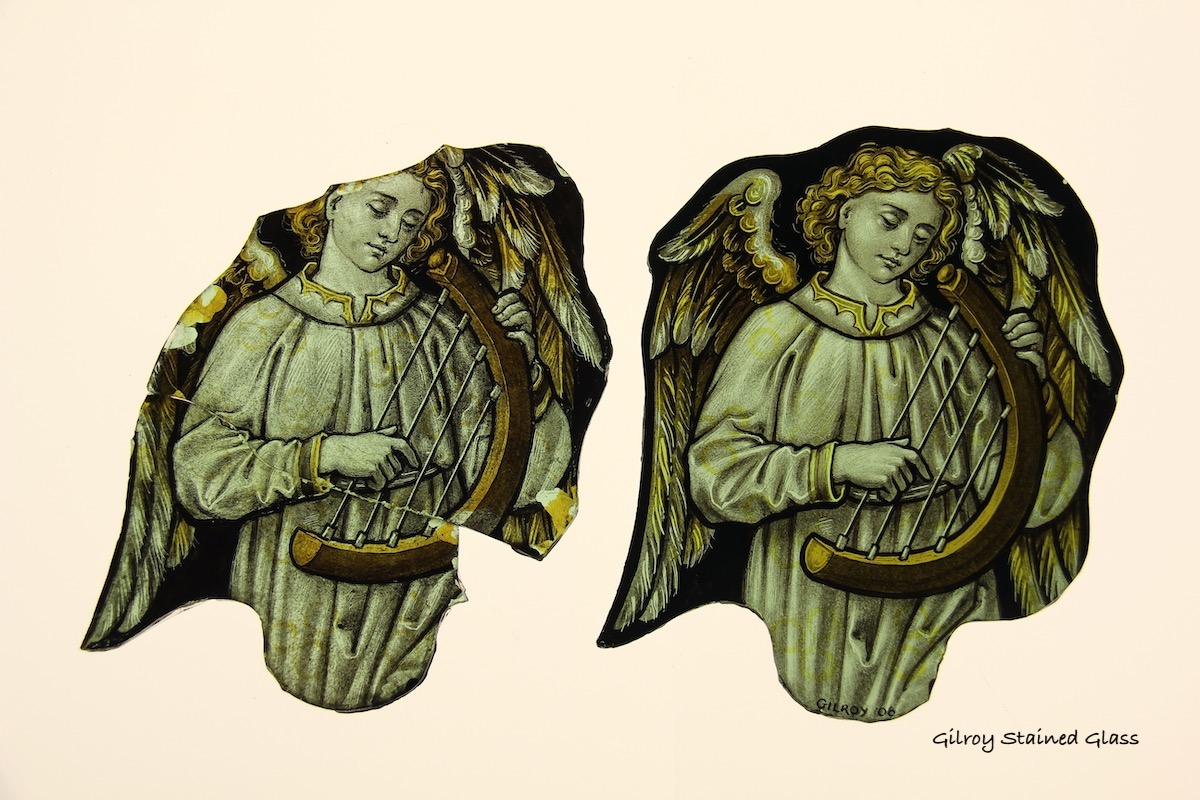
Painting in the style of another artist is one way to practice and hone glass painting skills. When we apprenticed in England, repeated work on damaged windows was a mainstay of our education. Creating a new piece that accurately matches an original painted by an artist who has been dead for over a hundred years is as much forensics as fine art. We start by matching the glass tone and colour as closely as possible, and if necessary testing how it kiln fires with paint and stain to avoid unexpected reactions. We then examine the piece to consider what binder was mixed with the paint, with experience it’s possible to assess how many times the piece was originally fired and what types of binders such as acetic acid, gum arabic, sugar or oil were used in the paint. The colour of the paint itself tends to be shades of red/brown or black/brown, and although paint is for structural lines and tonal values, it can affect how the glass colour is viewed by the way the light refracts through it. Matching the strength of line and depth of tone is essential as is the manner in which they are applied. When understanding is reached of not only how but why the artist painted in a certain way, an accurate match can be created.
The photo shows an original angel painted over a hundred years ago and a reproduction painted and stained by me to match. You have to admire the skill level and ability of the original artist, they could really paint. I think they would be pleased to know that their work was admired and studied so long after they were gone.
